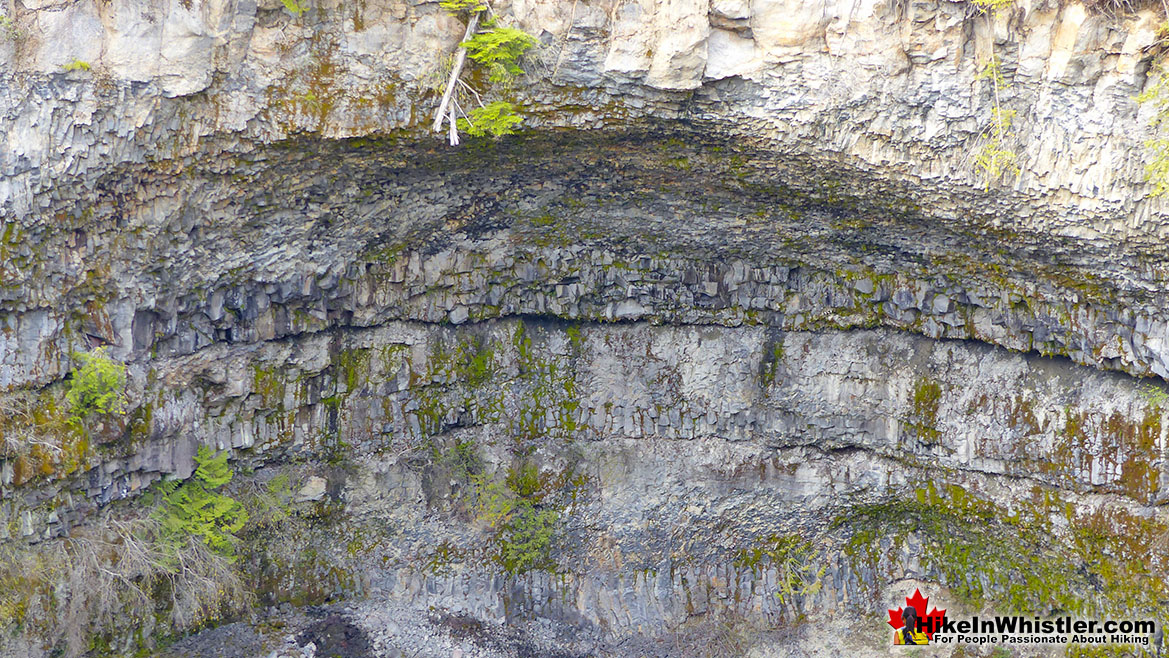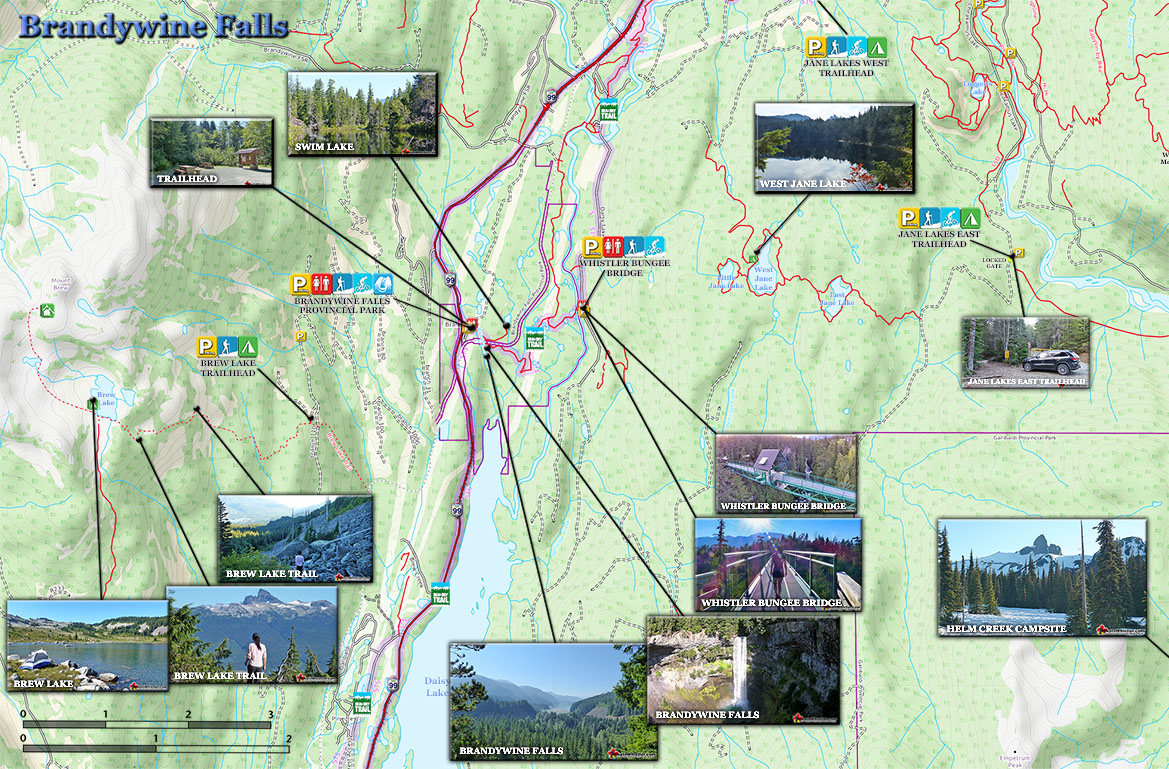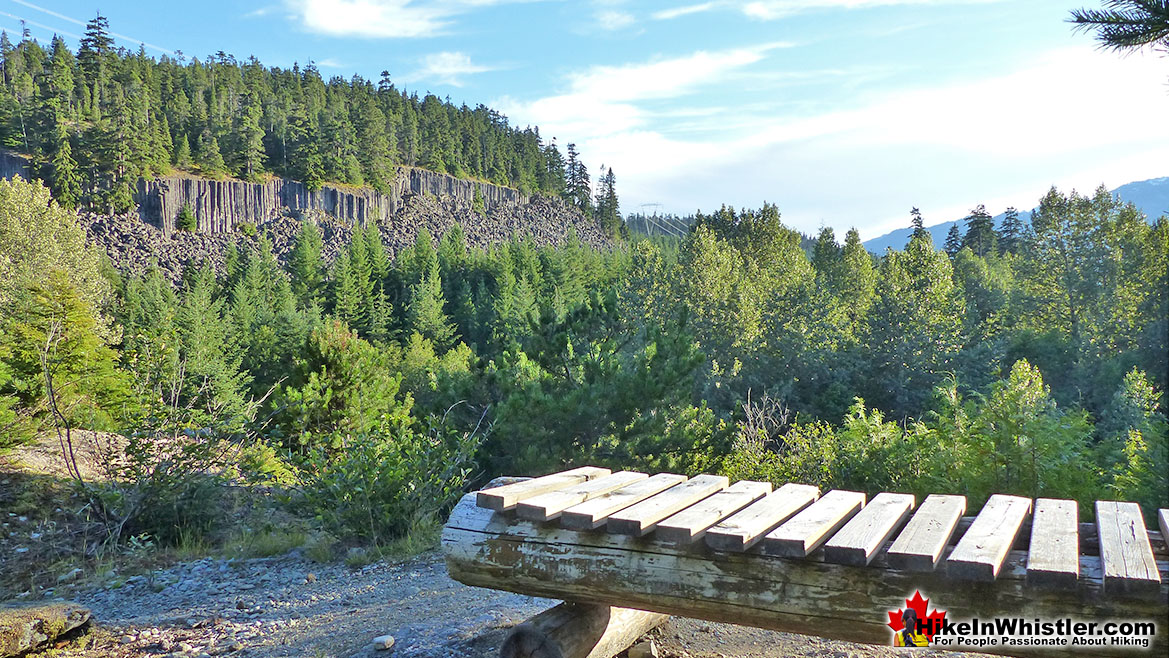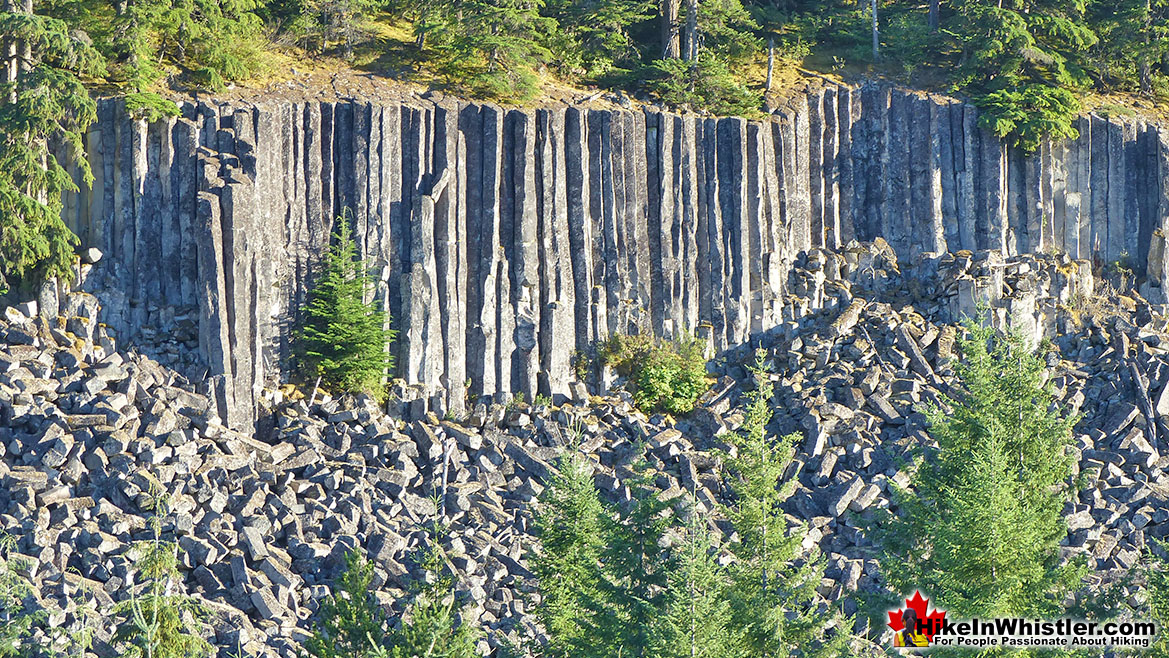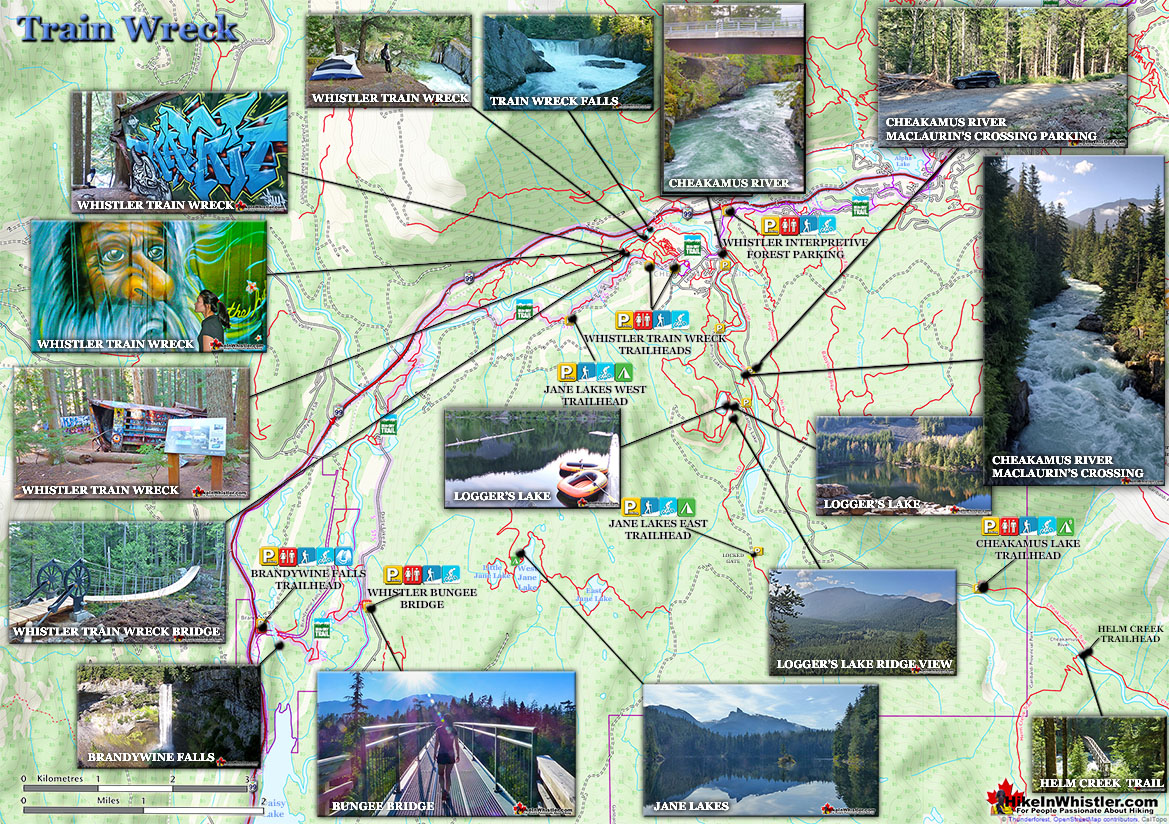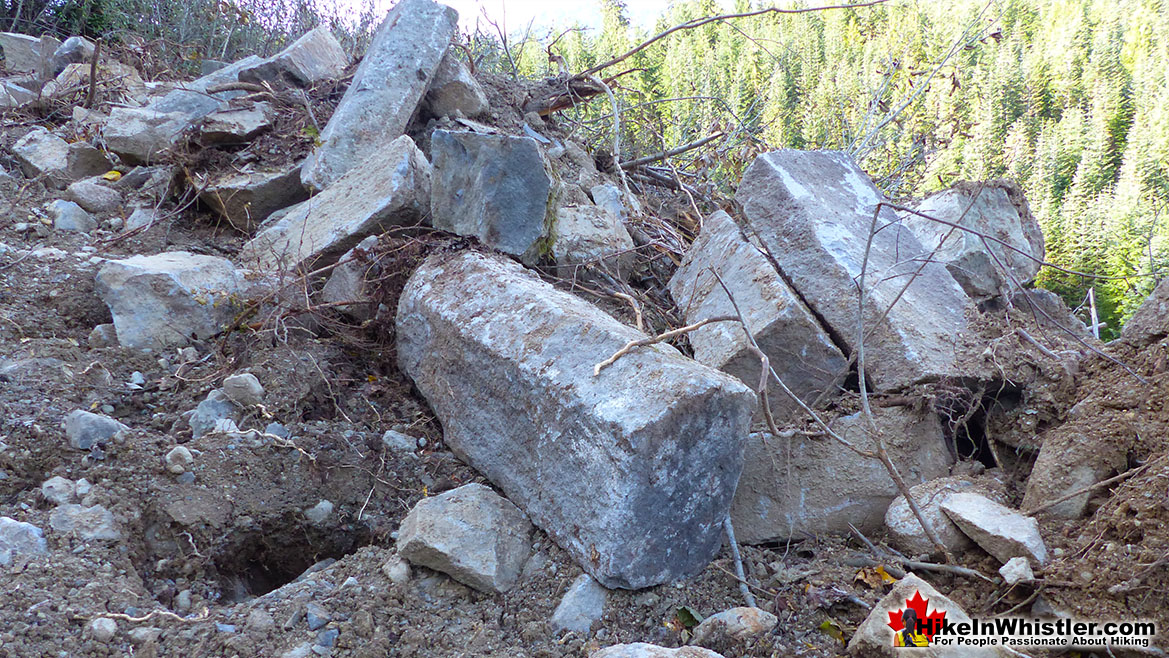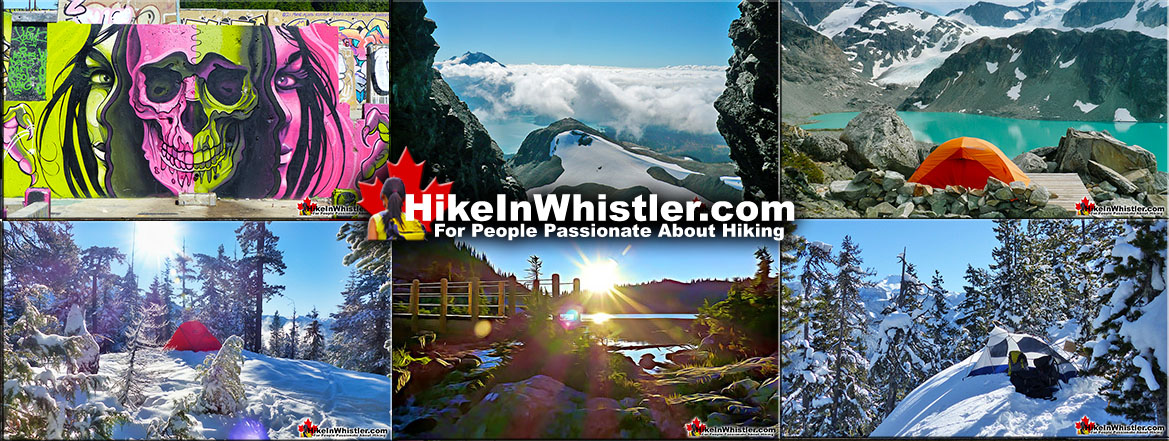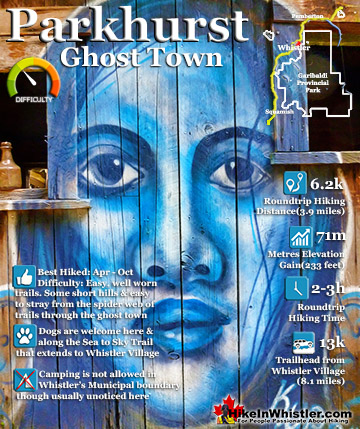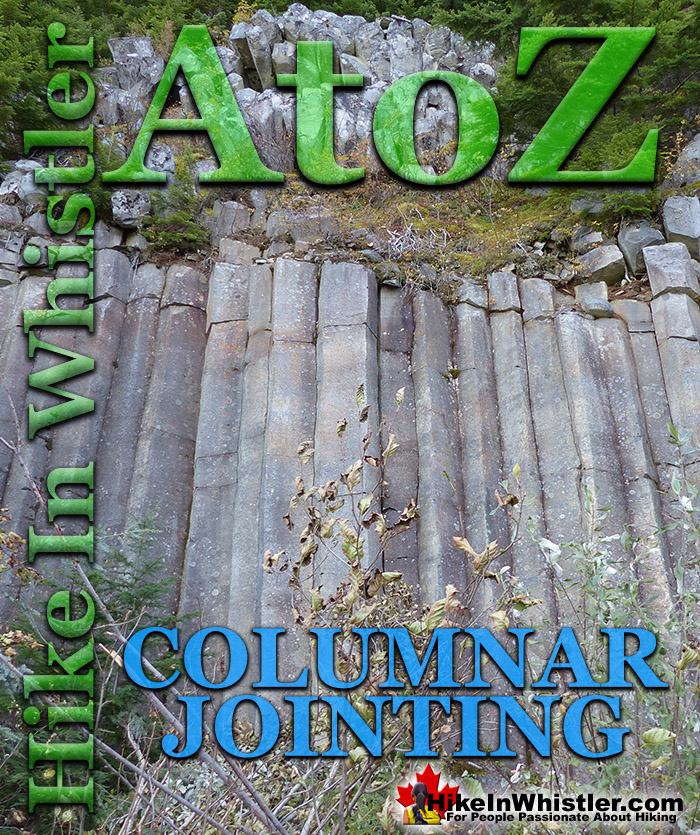
![]() Columnar Jointing: bizarre looking columns of oddly angular rock formations that can be found in many places around Whistler and worldwide. Generally found in large clusters packed together in a uniformly vertical array of columns that appear to be several metres long and usually more than 30 centimetres in diameter. Surface erosion causes the columns to fracture and break apart, giving the appearance of an ancient, crumbling wall.
Columnar Jointing: bizarre looking columns of oddly angular rock formations that can be found in many places around Whistler and worldwide. Generally found in large clusters packed together in a uniformly vertical array of columns that appear to be several metres long and usually more than 30 centimetres in diameter. Surface erosion causes the columns to fracture and break apart, giving the appearance of an ancient, crumbling wall.
Whistler & Garibaldi Hiking
![]() Alexander Falls
Alexander Falls ![]() Ancient Cedars
Ancient Cedars ![]() Black Tusk
Black Tusk ![]() Blackcomb Mountain
Blackcomb Mountain ![]() Brandywine Falls
Brandywine Falls ![]() Brandywine Meadows
Brandywine Meadows ![]() Brew Lake
Brew Lake ![]() Callaghan Lake
Callaghan Lake ![]() Cheakamus Lake
Cheakamus Lake ![]() Cheakamus River
Cheakamus River ![]() Cirque Lake
Cirque Lake ![]() Flank Trail
Flank Trail ![]() Garibaldi Lake
Garibaldi Lake ![]() Garibaldi Park
Garibaldi Park ![]() Helm Creek
Helm Creek ![]() Jane Lakes
Jane Lakes ![]() Joffre Lakes
Joffre Lakes ![]() Keyhole Hot Springs
Keyhole Hot Springs ![]() Logger’s Lake
Logger’s Lake ![]() Madeley Lake
Madeley Lake ![]() Meager Hot Springs
Meager Hot Springs ![]() Nairn Falls
Nairn Falls ![]() Newt Lake
Newt Lake ![]() Panorama Ridge
Panorama Ridge ![]() Parkhurst Ghost Town
Parkhurst Ghost Town ![]() Rainbow Falls
Rainbow Falls ![]() Rainbow Lake
Rainbow Lake ![]() Ring Lake
Ring Lake ![]() Russet Lake
Russet Lake ![]() Sea to Sky Trail
Sea to Sky Trail ![]() Skookumchuck Hot Springs
Skookumchuck Hot Springs ![]() Sloquet Hot Springs
Sloquet Hot Springs ![]() Sproatt East
Sproatt East ![]() Sproatt West
Sproatt West ![]() Taylor Meadows
Taylor Meadows ![]() Train Wreck
Train Wreck ![]() Wedgemount Lake
Wedgemount Lake ![]() Whistler Mountain
Whistler Mountain
![]() January
January ![]() February
February ![]() March
March ![]() April
April ![]() May
May ![]() June
June ![]() July
July ![]() August
August ![]() September
September ![]() October
October ![]() November
November ![]() December
December
The origin of these extraordinary rock formations is very interesting and leaves you imagining the not-too-distant past where volcanoes unleashed torrents of lava that met walls of ice hundreds of metres thick. Though columnar jointing can occur in different types of rock, they are mainly formed from basalt. Basalt is an igneous rock, formed from lava. During periods of glaciation, such as the last Ice Age that covered much of North America with ice sheets two kilometres thick. Columnar jointing is a formation that results from basaltic lava rapidly cooling from contact with a glacier. Where the basaltic lava contacts the glacier it will cool and solidify rapidly compared to the lava further away from the glacier. Cooling rock contracts and rapidly cooling rock tends to fracture in uniformly hexagonal columns. Less evenly spaced fractures produce 5 sided or 7 sided columns and the length of the columns is determined by the depth of the lava flow. A column several metres long will have formed from top to bottom as a series of shorter sections fracture all the way down. When you encounter columnar jointing they appear to be solid columns several metres long that have broken off into smaller pieces. With the top down cooling of the columns, they likely were not broken off, but were already fractured at the time they formed. There are several great places in Whistler to see columnar jointing, though they are more specifically known as the Cheakamus Valley Basalts. Along the highway south of Whistler you will see several great examples visible while you drive. The new Jane Lakes West trail near Cheakamus Crossing in Whistler takes you past some excellent example of columnar jointing that you will actually trip over at times. Nearby, the Whistler Train Wreck trail has an excellent viewpoint that looks across to an enormous wall of crumbling columns. Brandywine Falls is possibly the most impressive place in Whistler to see columnar jointing and give you an idea of the enormity of the Cheakamus Valley Basalts.
Brandywine Falls - Columnar Jointing in Whistler
![]() Brandywine Falls has a very interesting and visible geologic history and gives you great views of Cheakamus Valley Basalts columnar jointing. Looking across from the viewing platform you will see several obvious rock layers in the crumbling canyon the falls pour into. These layers were formed by repeated basaltic lava flows in the last 34000 years. At least four of these basaltic lava flow layers have been identified. The striking, rectangular columns of rock that make up the bands is the result of rapid cooling where lava and glacier ice met. The layers in between the basaltic layers is comprised of glacial till. This easily eroded, unconsolidated rock crumbles and erodes quickly. When the glacier that filled the Cheakamus Valley receded 12000 years ago, it left the vertical wall of layered rock you see at Brandywine Falls today. Thousands of years later water erosion from Brandywine Creek continues to erode the canyon. One puzzling aspect about geology of Brandywine Falls is the enormous size of the gorge the relatively small Brandywine Creek has presumably gouged out. Thousands of years of erosion by a creek of its size wouldn’t come close to creating such a chasm. The answer, it is thought, resulted from one or several large floods that gouged out the wide chasm we see today. Other evidence that points to large flooding is presence of large rounded boulders in the vicinity of the falls. Glacier scoured rock differs considerably from water eroded rock. Periodic, massive floods at the end of the last ice age are suspected to have resulted from ice dams holding back, then releasing enormous floods.
Brandywine Falls has a very interesting and visible geologic history and gives you great views of Cheakamus Valley Basalts columnar jointing. Looking across from the viewing platform you will see several obvious rock layers in the crumbling canyon the falls pour into. These layers were formed by repeated basaltic lava flows in the last 34000 years. At least four of these basaltic lava flow layers have been identified. The striking, rectangular columns of rock that make up the bands is the result of rapid cooling where lava and glacier ice met. The layers in between the basaltic layers is comprised of glacial till. This easily eroded, unconsolidated rock crumbles and erodes quickly. When the glacier that filled the Cheakamus Valley receded 12000 years ago, it left the vertical wall of layered rock you see at Brandywine Falls today. Thousands of years later water erosion from Brandywine Creek continues to erode the canyon. One puzzling aspect about geology of Brandywine Falls is the enormous size of the gorge the relatively small Brandywine Creek has presumably gouged out. Thousands of years of erosion by a creek of its size wouldn’t come close to creating such a chasm. The answer, it is thought, resulted from one or several large floods that gouged out the wide chasm we see today. Other evidence that points to large flooding is presence of large rounded boulders in the vicinity of the falls. Glacier scoured rock differs considerably from water eroded rock. Periodic, massive floods at the end of the last ice age are suspected to have resulted from ice dams holding back, then releasing enormous floods.
More Brandywine Falls Details..
Whistler Train Wreck - Columnar Jointing in Whistler
![]() The trail to Whistler Train Wreck is an easy, yet varied route through deep forest, across a great suspension bridge over Cheakamus River, to a stunning array of wrecked train cars. The trail from your car to the wrecks only takes about 15 minutes, however once you reach one wreck, you see another, then another. There are seven wrecks in total that are spread over an area about 400 metres long. Along with the surreal train wrecks painted with stunning murals, you find yourself in a thick forest that runs along Cheakamus River. Cheakamus River is a beautiful, wild and crashing river that snakes past the train wrecks. Numerous side trails take you to some marvellous viewpoints, several metres above the rushing water below. To find the columnar jointing viewpoint shown here you just have to find the trailhead/parking area just a couple hundred metres along the Cheakamus River FSR(previously Jane Lakes FSR).
The trail to Whistler Train Wreck is an easy, yet varied route through deep forest, across a great suspension bridge over Cheakamus River, to a stunning array of wrecked train cars. The trail from your car to the wrecks only takes about 15 minutes, however once you reach one wreck, you see another, then another. There are seven wrecks in total that are spread over an area about 400 metres long. Along with the surreal train wrecks painted with stunning murals, you find yourself in a thick forest that runs along Cheakamus River. Cheakamus River is a beautiful, wild and crashing river that snakes past the train wrecks. Numerous side trails take you to some marvellous viewpoints, several metres above the rushing water below. To find the columnar jointing viewpoint shown here you just have to find the trailhead/parking area just a couple hundred metres along the Cheakamus River FSR(previously Jane Lakes FSR).
More Whistler Train Wreck Details..
Jane Lakes - Columnar Jointing in Whistler
![]() Jane Lakes are a very remote feeling set of lakes in the beautiful wilderness near Cheakamus Crossing. Consisting of three lakes, West Jane Lake, East Jane Lake and Little Jane Lake, they have a great network of hiking trails that link and circle them all. The Jane Lakes West trail already has some great viewpoints and highlights. Several areas along the trail, you emerge from the trees and get a great view down the valley. The unmistakable, jagged peak of Mount Fee is nicely visible from several places. The trail also cuts through large boulder fields from crumbling cliffs. Further along you come to, and actually trip over a stunning remnant of a geologically recent phenomenon called the Cheakamus Valley Basalts. During the end of the last ice age, basaltic lava flows pools against the retreating glacier that filled Cheakamus Valley. The rapid cooling of the lava resulted in sets of intersecting, closely spaced fractures that formed regular arrays of angular, six sided columns of stunning symmetry. At several places along the trail, you come to a cliff wall of these bewildering columns of rock known as columnar jointing. These alien looking walls are in various stages of crumbling and breaking apart and the Jane Lakes West trail is possibly the best place around to touch and admire them.
Jane Lakes are a very remote feeling set of lakes in the beautiful wilderness near Cheakamus Crossing. Consisting of three lakes, West Jane Lake, East Jane Lake and Little Jane Lake, they have a great network of hiking trails that link and circle them all. The Jane Lakes West trail already has some great viewpoints and highlights. Several areas along the trail, you emerge from the trees and get a great view down the valley. The unmistakable, jagged peak of Mount Fee is nicely visible from several places. The trail also cuts through large boulder fields from crumbling cliffs. Further along you come to, and actually trip over a stunning remnant of a geologically recent phenomenon called the Cheakamus Valley Basalts. During the end of the last ice age, basaltic lava flows pools against the retreating glacier that filled Cheakamus Valley. The rapid cooling of the lava resulted in sets of intersecting, closely spaced fractures that formed regular arrays of angular, six sided columns of stunning symmetry. At several places along the trail, you come to a cliff wall of these bewildering columns of rock known as columnar jointing. These alien looking walls are in various stages of crumbling and breaking apart and the Jane Lakes West trail is possibly the best place around to touch and admire them.
More Jane Lakes West Details..
More Whistler & Garibaldi Park Hiking A to Z!
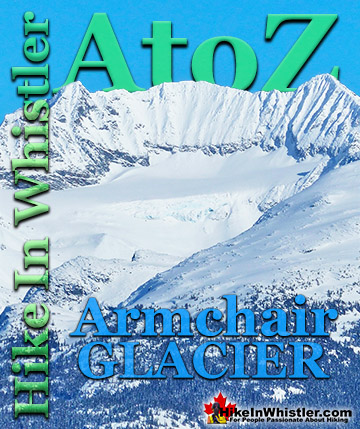


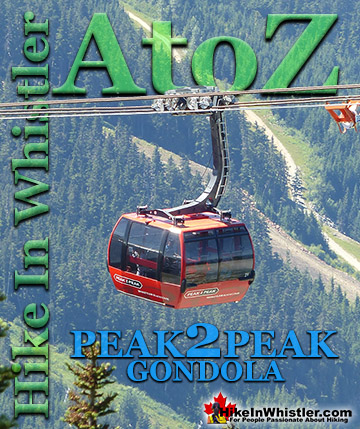


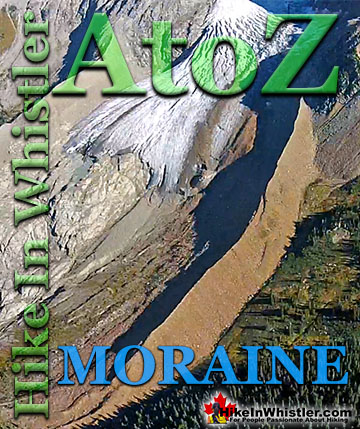
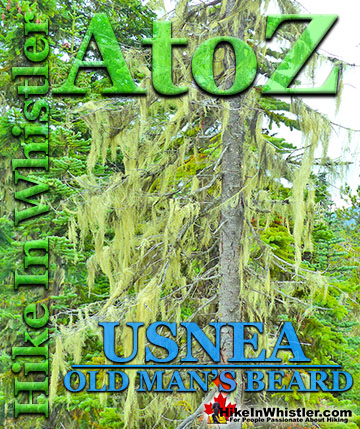
The Best Whistler & Garibaldi Park Hiking Trails!
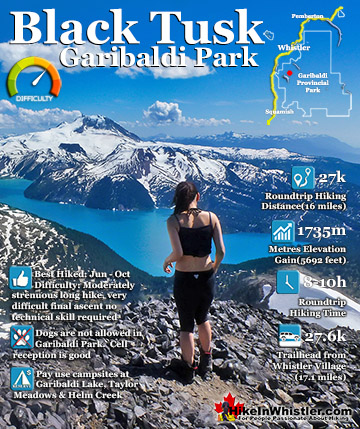
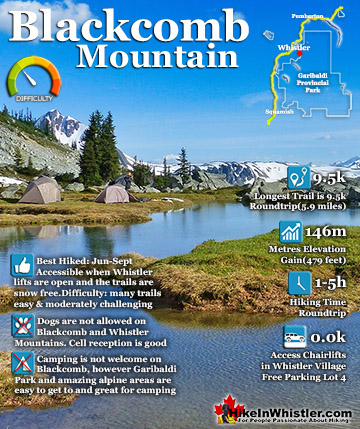

Whistler & Garibaldi Park Best Hiking by Month!


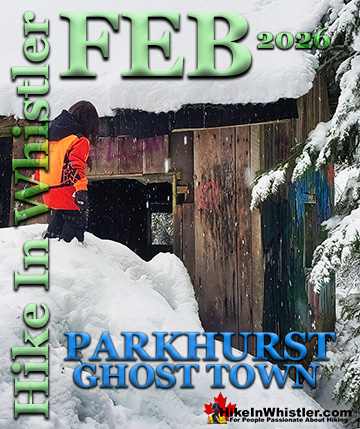
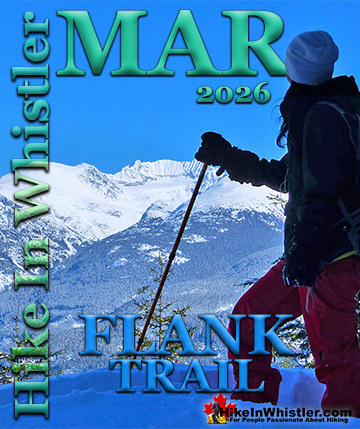
Explore BC Hiking Destinations!
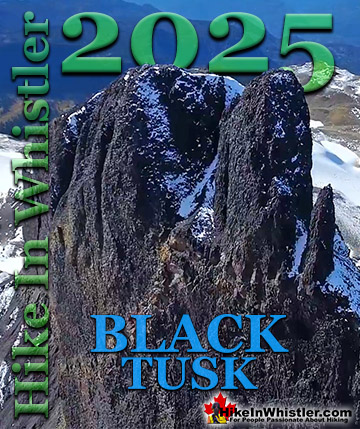
Whistler Hiking Trails
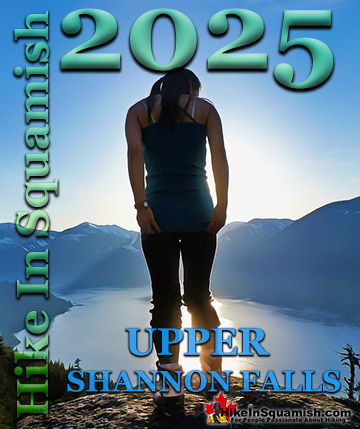
Squamish Hiking Trails
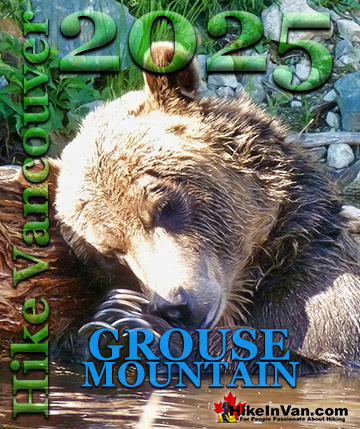
Vancouver Hiking Trails

Clayoquot Hiking Trails
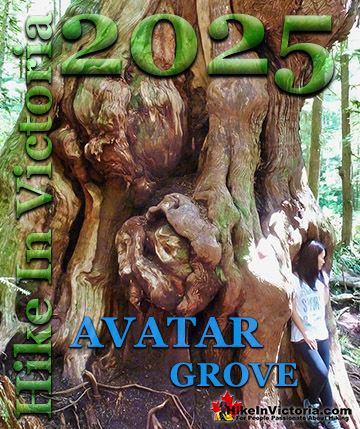
Victoria Hiking Trails



